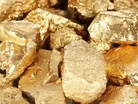Innovations in Gold Explorations Techniques

Gold has always fascinated humans. Even before the beginning of recorded history it has been a valuable and highly sought-after precious metal. Through the years it has served a variety of purposes from coinage and jewelry to practical uses in medicine, dentistry, and electronics. In recent years, the increase in demand for gold has caused prices for the metal to soar, leading to many mining companies bolstering efforts in gold exploration.
Gold mining through the years
People have used mining techniques to access minerals in the earth since the creation of civilization. The gold mining technology in the early years was very simply. It consisted largely of manual labor and primitive tools for little to no reward. Made famous in the California Gold Rush and the Colorado Gold Rush, Placer Mining takes a variety of forms and steps, including panning, “sluice-boxing”, hydraulic mining, and dredging. All of these techniques use gravity and water to separate the denser gold from other sand and gravel.
The vast majority of current gold production comes from commercial hardrock mining operations. Hardrock (Lode) mining is the extraction of gold from the rock where it was originally deposited. Most hardrock mines are either underground or open-pit mines. An underground mine is a tunnel drilled or basted to the source of the ore whereas an open-pit mine is the removal or extracting of rock and minerals from an open pit or borrow. Open-pit mines are used when deposits of commercially useful minerals or rock are found near the surface. Nearly two-thirds of all new mined gold comes from open-pit mines.
Methods, Techniques, and Tools
The methods of mining and extracting for gold have changed rapidly over the years. In today’s technologically-advanced society, newly-developed machines have been created to excavate with more accuracy and less harm to the surrounding environment. Miners can now utilize superior machinery to mine for larger masses of gold across more expansive areas at extraordinary depths underground. Advancements in equipment and tools include trucks, drills, explosives, processing plants, and even automated robots.
As much of the earth’s best gold mines are exhausted, miners are now relying on dangerous chemicals to extract, separate, and refine gold, causing an immense impact not only on the environment, but the miners as well. Dangerous extraction techniques include Heap Leaching and Amalgamation. Over the years, disastrous spills have forced the gold industry to change how it handles cyanide by setting new standards for transportation and storing the chemical. Mining operations also have potentially significant impact on the environment throughout their life cycle, from exploration and construction to operation and closure. All of these factors have played a vital role in the perception of mining and could possibly play an even bigger role in the future of gold exploration
The Future of Gold Mining
Mining companies such as Rio Tinto and Barrick Gold are beginning to adopt greener technologies and practices, aimed at helping the mining industry clean up after hundreds of years of inefficiencies and waste. Barrick Gold is currently engaged in 140 energy efficiency projects across its operations and now sources more than 19 percent of its electrical power from renewable energy. Likewise, Rio Tinto is currently running a pilot mine in New South Wales, Australia, that tests methane capturing technologies and a carbon dioxide storage project in Victoria, Australia. The company plans to trial new technologies aimed at capturing and reducing CO2 and methane emissions. Companies like Ecosphere Mining are focusing on water reclamation and recycling products while Consol Energy’s newest facility is treating water from underground mines. More and more companies are springing up to help provide environmentally friendlier technologies to these newly green mining operations.
In 2009 the Canadian government agency Natural Resources Canada (NRCan) launched the Green Mining Initiative to focus efforts and developments on reducing the environmental footprint of mining through waste management, mine closure, and rehabilitation and ecosystem management. The agency’s science lab has been exploring greener extraction processes as well as experimenting with ways to eliminate the use of explosives. The lab is developing processes for waste management involving alternative waste-disposal methods and prevention of acid-related environmental damage. NRCan is working towards “zero-discharge” processes by re-mining waste materials.
Additionally, scientists at Northwestern University have discovered an inexpensive and environmental benign method that uses simple cornstarch – instead of cyanide – to isolate gold from raw materials in a selective manner. Nearly all gold-mining companies use this toxic gold leaching process to sequester the precious metal.
As the gold mining industry continues to progress, the industry could very well be moving towards green initiatives as well as utilizing automated technology with less hands-on involvement from miners entirely.
- Who is Rio Tinto’s New Chief Executive Officer Simon Trott?Operations
- PwC Australia: Gold on rise, Lithium and Coal on WaneOperations
- Rio Tinto to Acquire Arcadium Lithium for $6.7bnSupply Chain & Operations
- Rio Tinto, BHP & Glencore 'Feeling the Pinch on Copper'Supply Chain & Operations



